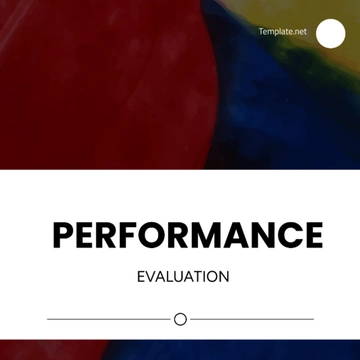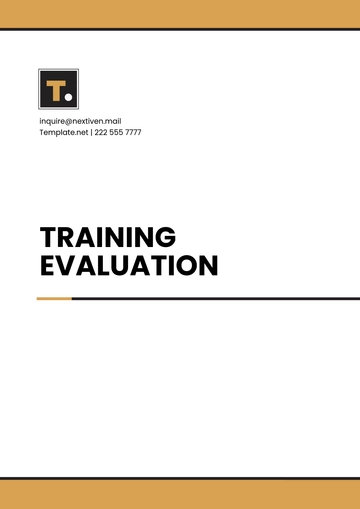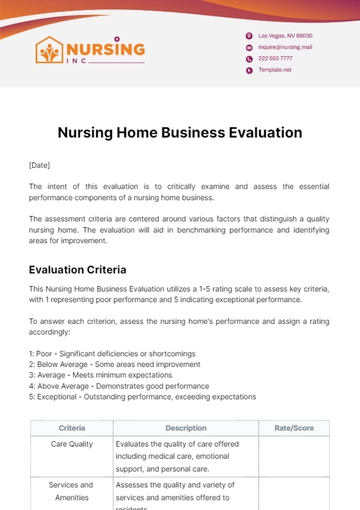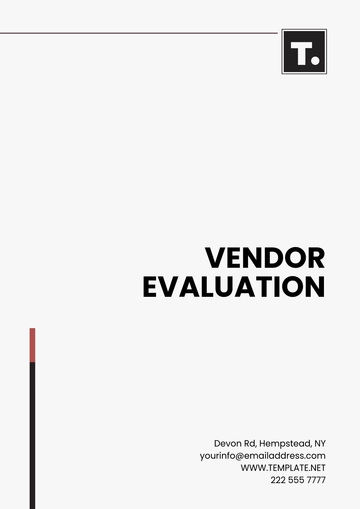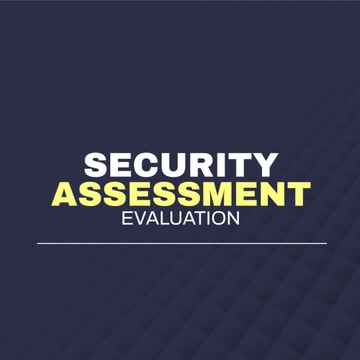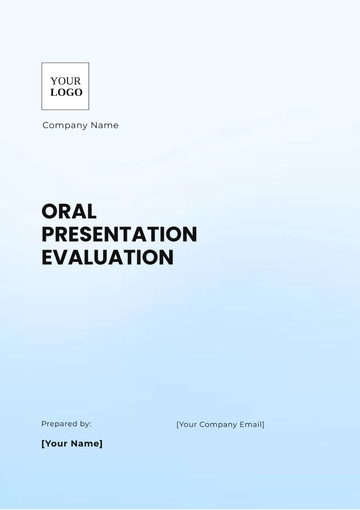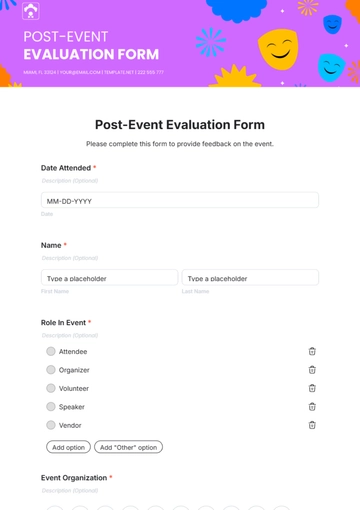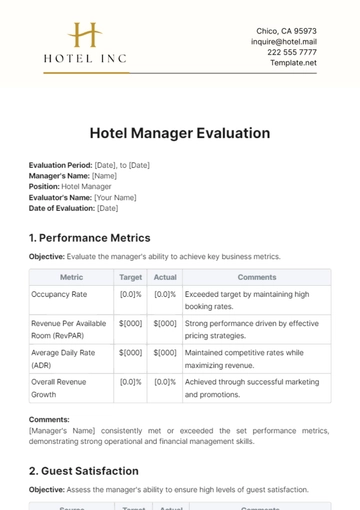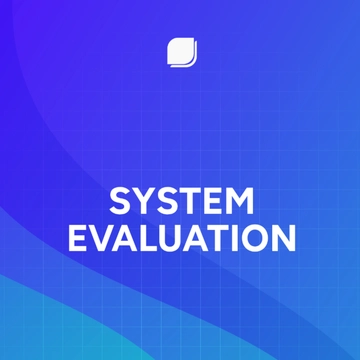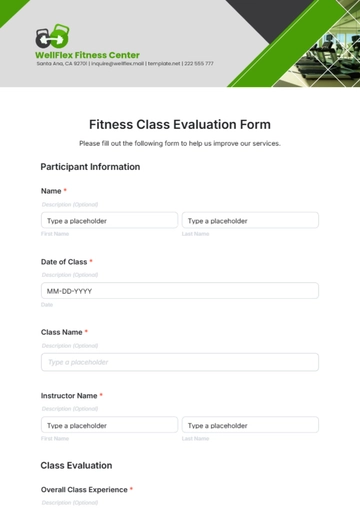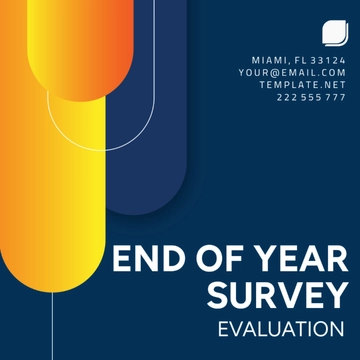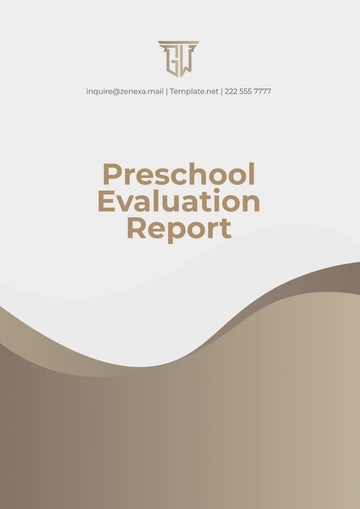Free Account Budget Evaluation Manual
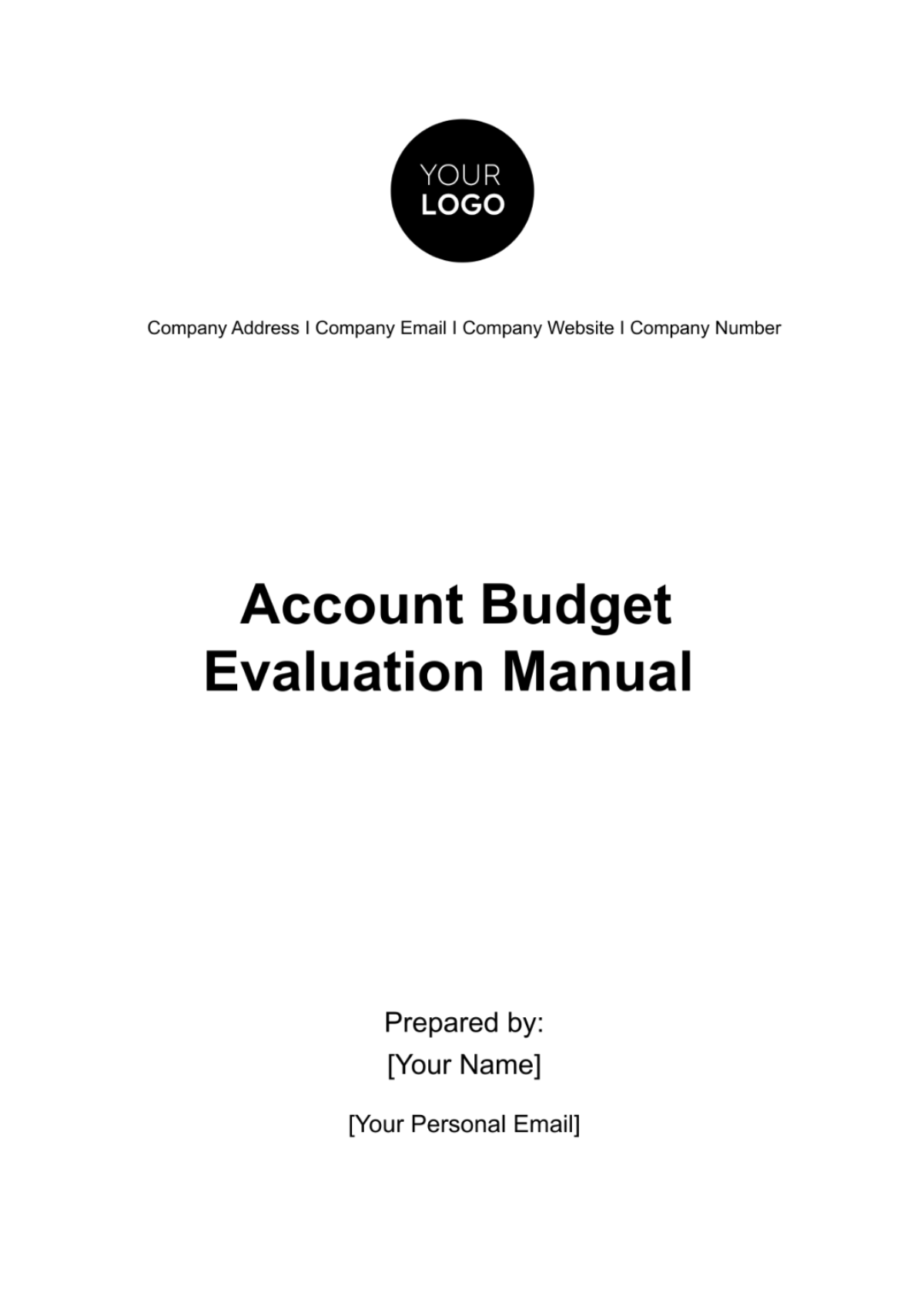
Introduction
This Account Budget Evaluation Manual is designed to guide our organization through a systematic approach to assessing the effectiveness and efficiency of our budgeting process. Ensuring that every dollar is optimally allocated and our financial goals are strategically aligned with our overarching objectives is paramount. Through this manual, we aim to foster a culture of financial discipline, strategic planning, and continuous improvement across all levels of our organization.
Description of the Budgeting Cycle
The budgeting cycle is a continuous process that ensures our financial planning, execution, and review are aligned with our strategic goals. This cycle facilitates proactive management of resources, enabling us to adapt to changing circumstances and seize new opportunities. The key steps involved in our budgeting cycle include:
Planning: This initial phase involves setting financial goals based on our strategic objectives, forecasting revenue, and planning expenditures for the upcoming period. It requires collaboration across departments to ensure all needs and potential opportunities are considered.
Approval: Once the budget is drafted, it undergoes a thorough review and approval process by senior management and, if necessary, the board of directors. This ensures that the proposed budget aligns with our strategic direction and financial capabilities.
Execution: With the budget approved, departments begin implementing their plans, making expenditures, and generating revenue according to the budget. This phase requires careful monitoring to ensure adherence to the budget and to identify any deviations early.
Review and Evaluation: At regular intervals, the budget's performance is reviewed to assess its effectiveness in meeting our financial goals. This includes analyzing variances between projected and actual figures and identifying the causes of any discrepancies.
Adjustment: Based on the review, adjustments may be made to the budget to address any unexpected challenges or to capitalize on new opportunities. This ensures that our financial planning remains relevant and responsive to our current needs and objectives.
Reporting: The final step involves compiling reports on the budget's performance and presenting them to stakeholders. These reports inform decision-making for future budget cycles and strategic planning.
Key Principles of Effective Budgeting
Effective budgeting is foundational to our organization's financial health and strategic success. By adhering to the following principles, we ensure that our budgeting process supports our goals and adapts to our dynamic environment:
Accuracy: Our budgets are based on realistic, data-driven forecasts and assumptions to minimize variances between projected and actual figures.
Flexibility: We maintain flexibility in our budgets to adjust for unforeseen circumstances, ensuring that we can respond effectively to changes without compromising our strategic objectives.
Transparency: Transparency in the budgeting process fosters trust and accountability. It involves clear communication of financial goals, assumptions, and outcomes to all stakeholders.
Participation: Encouraging participation from across departments ensures that diverse perspectives and expertise inform our budgeting process, leading to more comprehensive and effective financial planning.
Review and Continuous Improvement: Regular review and evaluation of our budgeting practices allow us to learn from past experiences, refine our processes, and improve future financial performance.
Roles and Responsibilities
Effective budget evaluation requires clear delineation of roles and responsibilities to ensure accountability, efficiency, and thoroughness in the process. Our organization recognizes the importance of involving various departments and levels of management to provide comprehensive insights and foster a collaborative approach to financial management. This collaborative effort ensures that our budgeting process is not only a financial exercise but also a strategic tool that aligns with our overall objectives.
Role | Responsibilities |
Senior Management | Approve the final budget, provide strategic direction, and ensure resources are allocated efficiently. |
Finance Department | Coordinate the budgeting process, compile and analyze financial data, and report on budget performance. |
Department Heads | Develop departmental budgets, monitor actual performance vs. budget, and implement corrective actions. |
Budget Committee | Review budget proposals, facilitate discussions between departments and management, and recommend adjustments. |
Internal Audit | Conduct periodic audits to ensure compliance with budgetary controls and evaluate financial integrity. |
External Auditors | Provide an independent assessment of financial statements and adherence to budgetary processes. |
Evaluation Criteria
The evaluation of our budget involves a detailed analysis of key financial indicators that provide insights into our financial health, efficiency, and strategic alignment. By focusing on these metrics, we can assess the effectiveness of our budgeting process and make informed decisions to enhance our financial performance.
Financial Indicator | Description |
Revenue Growth | Measures the percentage increase in revenue over a specified period, indicating market expansion and effectiveness of sales strategies. |
Expense Management | Assesses how effectively the organization controls costs relative to budgeted amounts and revenue growth. |
Net Profit Margin | Evaluates the percentage of revenue remaining after all expenses, providing insight into overall profitability. |
Return on Investment (ROI) | Calculates the efficiency of various investments in generating profit, guiding resource allocation decisions. |
Cash Flow Analysis | Examines the inflows and outflows of cash, assessing the organization's liquidity and ability to fund operations and investments. |
Variance Analysis | Identifies and explains deviations between budgeted and actual financial performance, highlighting areas for improvement. |
Evaluation Tools and Techniques
To conduct a comprehensive evaluation of our budget, we employ a variety of tools and techniques that allow us to analyze both quantitative and qualitative aspects of our financial performance. These tools enable us to delve deeply into the numbers, understand the story they tell, and assess how well our budget aligns with our strategic objectives. By combining these methods, we ensure a holistic view of our financial health and operational efficiency.
Quantitative Tools
Tool | Description |
Variance Analysis | Compares actual results to budgeted figures to identify deviations and their causes. |
Trend Analysis | Examines financial data over time to identify patterns and predict future performance. |
Financial Ratios | Calculates ratios such as debt-to-equity, return on equity, and current ratio to assess financial health. |
Cash Flow Analysis | Evaluates the timing and amounts of cash inflows and outflows to understand liquidity positions. |
Break-even Analysis | Determines the point at which revenues equal expenses, highlighting the viability of products or services. |
Qualitative Assessments
Assessment | Description |
Stakeholder Feedback | Gathers insights from internal and external stakeholders on the budgeting process and financial performance. |
Strategic Alignment | Assesses how well the budget supports the organization's strategic goals and objectives. |
Operational Efficiency | Evaluates processes and procedures for potential improvements in efficiency and effectiveness. |
Risk Management Assessment | Reviews the identification, assessment, and mitigation of financial and operational risks. |
Data Collection and Analysis
To ensure a robust evaluation, we gather data from both internal and external sources. This comprehensive approach provides us with the necessary insights to accurately assess our budget's performance and make informed decisions.
Data Sources
Internal Sources: Financial statements, including income statements, balance sheets, and cash flow statements. Departmental budgets and performance reports. Internal audit findings. Stakeholder feedback from employees and management.
External Sources: Industry benchmarks and standards. Economic forecasts and market trends. Regulatory and compliance reports. Customer feedback and market research data.
Analysis Approach
Analyzing the collected data involves several steps designed to extract meaningful insights and actionable intelligence. We start by consolidating and cleaning the data to ensure accuracy and relevance. Next, we apply quantitative tools to perform numerical analysis, identifying trends, variances, and financial ratios that indicate our performance relative to the budget. For qualitative data, we analyze feedback and reports to assess stakeholder satisfaction, strategic alignment, and operational efficiency.
The integration of findings from both quantitative and qualitative analyses enables us to form a comprehensive view of our budget's effectiveness. By correlating financial outcomes with operational and strategic benchmarks, we identify areas of strength and opportunities for improvement. This thorough analysis informs our decision-making process, guiding adjustments to our budgeting practices and strategic planning to enhance overall performance and sustainability.
Reporting
Effective reporting is crucial for translating the outcomes of our budget evaluation into actionable insights and decisions. It involves presenting complex financial data and qualitative assessments in a clear, concise, and accessible manner. Our reporting formats are designed to cater to different stakeholder needs, ensuring that all relevant parties can easily understand our financial performance, challenges, and opportunities for improvement. By standardizing our reporting formats, we enhance transparency, accountability, and strategic alignment across the organization.
Format | Audience | Description |
Executive Summary | Senior Management | Provides a high-level overview of key findings, implications, and recommendations. |
Detailed Financial Report | Finance Department & Budget Committee | Offers an in-depth analysis of financial performance, including variance and trend analyses. |
Departmental Performance Report | Department Heads | Breaks down budget performance by department, highlighting achievements and areas for improvement. |
Stakeholder Report | All Stakeholders | Summarizes budget outcomes, strategic alignment, and future directions in an accessible format. |
Action Plan | Relevant Departments | Outlines specific actions to be taken in response to the evaluation findings, including timelines and responsibilities. |
Communication
Effective communication is the backbone of our budget evaluation process, ensuring that findings and recommendations are not only understood but also acted upon. Our communication strategies are designed to facilitate dialogue, encourage feedback, and foster a culture of continuous improvement. By engaging with stakeholders through appropriate channels and formats, we ensure that the insights from our budget evaluation lead to meaningful changes and reinforce our commitment to transparency and accountability.
Strategy | Audience | Description |
Presentation Meetings | Senior Management & Department Heads | Facilitates face-to-face discussions of key findings, encouraging immediate feedback and engagement. |
Internal Newsletters | All Employees | Provides regular updates on financial performance, highlighting successes and areas for improvement. |
Feedback Sessions | All Stakeholders | Organizes open forums and surveys to gather stakeholder feedback on the budgeting process and outcomes. |
Training Sessions | Finance Department & Budget Managers | Offers in-depth sessions on financial literacy, budgeting techniques, and changes in processes. |
Digital Dashboards | Relevant Departments | Utilizes real-time data visualizations to monitor ongoing financial performance against the budget. |
Monitoring and Continuous Improvement
Our approach to monitoring and continuous improvement is built on the premise that effective financial management is an ongoing process, not a one-time evaluation. To maintain and enhance our financial health and operational efficiency, we have established mechanisms for continuous monitoring of our financial performance and a process for incorporating feedback and learnings into our budgeting practices. This proactive stance ensures that we can quickly adapt to changes and continuously refine our strategies to meet our financial and strategic goals.
Monitoring Mechanisms
Regular Financial Reviews: Conduct monthly and quarterly reviews to assess financial performance against the budget, ensuring timely identification of variances.
Digital Dashboards: Utilize digital dashboards for real-time monitoring of key financial indicators, allowing for quick adjustments.
Internal Audits: Schedule semi-annual internal audits to evaluate compliance with budgetary controls and financial procedures.
Stakeholder Feedback: Collect ongoing feedback from employees, customers, and partners to identify areas for financial and operational improvement.
Benchmarking: Periodically benchmark against industry standards and competitors to identify best practices and areas for improvement.
Continuous Improvement Process
Review Findings: Regularly assess monitoring data and audit results to identify trends, challenges, and opportunities.
Stakeholder Engagement: Involve stakeholders in reviewing findings and brainstorming solutions to address identified issues.
Implement Changes: Develop and implement action plans to address areas for improvement, allocating resources as necessary.
Evaluate Impact: Assess the effectiveness of implemented changes, analyzing their impact on financial performance and strategic alignment.
Refine Strategies: Based on evaluation results, refine budgeting strategies and processes for the next cycle, incorporating lessons learned.
Case Studies and Examples
Case Study 1: Efficiency Through Automation
A manufacturing company faced challenges with overspending and resource misallocation. By implementing an automated budget tracking and reporting system, they were able to identify inefficiencies in real-time, leading to a 15% reduction in operational costs and improved allocation of resources towards high-priority projects.
Case Study 2: Strategic Realignment for Growth
A retail chain experiencing stagnant growth conducted a comprehensive budget evaluation, revealing that a significant portion of their budget was allocated to underperforming stores. By reallocating resources towards online sales channels and high-growth regions, they achieved a 20% increase in overall revenue within the first year.
Case Study 3: Enhancing Profitability through Cost Control
A software development firm utilized variance analysis to identify areas where actual spending consistently exceeded budgeted amounts. Focused efforts on renegotiating supplier contracts and optimizing project management processes resulted in a 10% decrease in project costs and a subsequent increase in net profit margins.
- 100% Customizable, free editor
- Access 1 Million+ Templates, photo’s & graphics
- Download or share as a template
- Click and replace photos, graphics, text, backgrounds
- Resize, crop, AI write & more
- Access advanced editor
Introduce rigor and precision to your financial reviews with the Account Budget Evaluation Manual Template from Template.net. This editable and customizable resource is designed to streamline the evaluation of budgetary performance and compliance. Made to be editable in our AI Editor tool, it provides a systematic approach for assessing and enhancing budget management. With Template.net, empower your team with the tools needed for meticulous budget evaluation, ensuring financial integrity and accountability.

